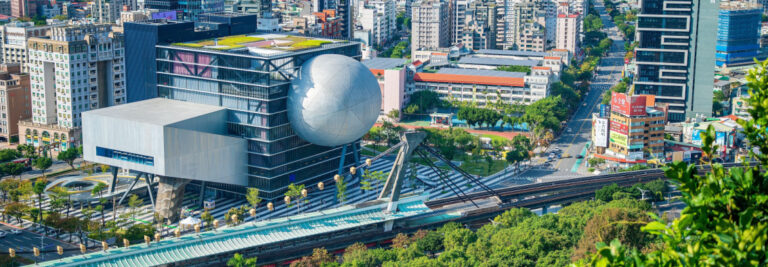On December 25th, Taiwan’s government launched the Asian Silicon Valley initiative (ASV). In the lead up to formal approval, there were vibrant discussions with varying degrees of support and skepticism within Taiwan regarding the initiative’s short-term and long-term objectives. While the motivation for the ASV initiative may make obvious sense, less clear and more difficult are identifying and overcoming the challenges ahead.
In overview, the ASV’s aim to focus on the IoT (Internet of Things) industries is on the right track as it will encourage Taiwan’s globally competitive electronics and manufacturing sectors to synergize with its software industry. However, the majority of value creation in the IoT sector is expected to come from data-driven software solutions, a visible departure from Taiwan’s traditional strength in hardware design and manufacturing. The challenge may be summarized in terms of Taiwan’s existing managerial talent gap and Taiwan’s overemphasis on replicating the American Silicon Valley model. Indeed, Taiwanese president Tsai Ing-wen stopped in San Francisco earlier this month and inaugurated the “Executive Center for the Asian Silicon Valley Plan.”
Over the past four decades, Taiwan’s dominance in electronics design and manufacturing created a well-educated workforce that boasts a college attainment rate that is roughly 30 percent higher than that of the United States, and includes a high percentage of engineering graduates. However, since the dotcom bubble, business processes have evolved profoundly in the technology industry. Software engineering has transformed itself from an assembly-line model that ships desktop software in boxes to a real-time, mobile-based and web-based model that integrates vast amounts of on-demand data, deploys continuously, and automates much of production overhead management. As a result, the global tech economy now demands managerial talent that excels at managing large engineering organizations with flat leadership structure and large numbers of engineering and design creatives. In the past 15 years, Taiwan has not produced a significant software player in the internet economy, leaving a gap in the managerial talent necessary to manage, execute and lead a next-generation tech workforce.
Secondly, technology expertise has also shifted dramatically since the turn of the millennium. Today, technology firms no longer crave raw development talent, and instead compete for field-specialized interdisciplinary talent. Taking fields such as Artificial Intelligence or Robotics for example: in order to be a productive specialist, one would need a solid background in cognitive psychology (as the basis for designing intelligent behaviors), decision theory (as the basis for machine decision-making), and design (as the basis for commercial feasibility), alongside traditional computer and electrical engineering. Taiwan’s higher education has traditionally favored engineering and shunned research and education in basic sciences, humanities, and social sciences. Consequently, Taiwan’s engineering workforce will require substantial re-training in order to fill the labor gap of interdisciplinary talent needed to grow successful technology sectors.
Lastly, Taiwan to date has focused its technology policies on replicating the success of Silicon Valley, which grew out of large, isolated research science parks shored up by massive, economic, human resource and political support during the Cold War era. The Silicon Valley model, given its unique history, is unlikely to be replicated anywhere else in the world. Therefore, Taiwan should instead look to other global technology clusters for policy inspiration. While Silicon Valley remains the world’s undisputed premier technology cluster, the US Northeast Corridor (New York, Boston, Philadelphia, and DC) has risen in the past decade to become the world’s second largest, with other clusters like Los Angeles, Chicago, London, and Beijing also expanding rapidly. The majority of technology clusters outside of Silicon Valley espouse a “fusion” model, where technology firms capitalize on existing sectors such as entertainment, media, fashion, education, culture, retail, or public security, to create new paradigms for traditional economic strengths. Given Taiwan’s traditional strengths in manufacturing, and Taipei’s existing media, politics, entertainment, education, and financial sectors, the island nation will likely see more success in a “fusion” model that contrasts with that of the Silicon Valley.
In the near term (and arguably during President Tsai’s tenure), Taiwan will need to create substantial employment and tax incentives for desired talent to enter the island either as high-skill workers or as entrepreneurs. While much of the discussion has been around attracting foreign talent, it is important to note that Taiwan is currently witnessing a severe talent drain, totalling more than 20,000 white-collar workers a year, many of whom have gone to the People’s Republic of China, which now employs more than 400,000 Taiwanese.
In the long term, Taiwan must tackle the fundamental problem of its unbalanced approach to education and research, in order to maintain a talent edge in a world where interdisciplinary engineering creatives with automation tools are rapidly replacing singular disciplinary talent. It is crucial for the Tsai administration to push for nationally coordinated academic agendas in Robotics, Human-Computer Interaction, Artificial Intelligence, and Computational Biology, and to complement these interdisciplinary developments with stronger research and education in basic sciences and liberal arts such as Mathematics, Statistics, Psychology, and Economics.
The main point: Taiwan’s new Asian Silicon Valley initiative’s success hinges on bridging the managerial gap in its trailing software industry, as well as supporting interdisciplinary training programs to produce talent necessary for new fields such as Artificial Intelligence, User Experience and Robotics. As an export-driven economy, Taiwan should look to technology clusters such as New York, Boston, and DC for their industrial fusion models that transformed traditional competencies with technology, as opposed to mimicking the research park-initiated model of Silicon Valley.





